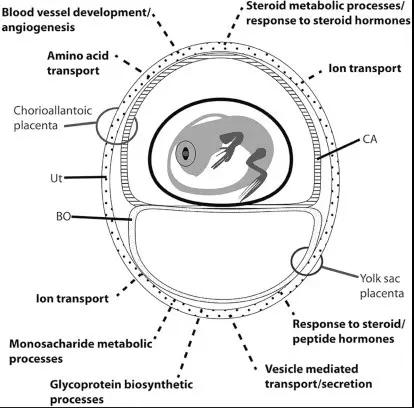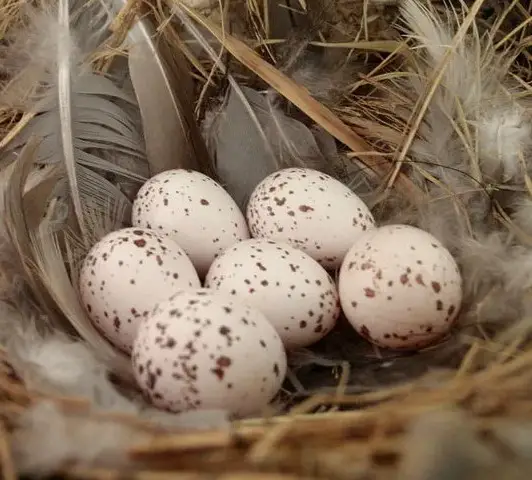Reproductive strategies among animals exhibit a fascinating array of methods, each tailored to ensure the survival of offspring in diverse environmental conditions. Among these strategies, oviparity, ovoviviparity, and viviparity stand out as fundamental approaches that have evolved over millions of years. These mechanisms highlight the adaptability and complexity of life, showcasing how species optimize reproductive success in response to ecological pressures.
The difference between oviparity, ovoviviparity, and viviparity lies in how offspring are developed and nurtured before birth. Oviparity involves laying eggs that develop and hatch outside the parent’s body. Ovoviviparity refers to the development of eggs inside the parent’s body without direct nourishment from the parent, leading to live birth. Viviparity, on the other hand, involves the offspring developing within the parent, receiving direct nourishment, and being born as live young.
This triad of reproductive strategies offers insights into the evolutionary biology of animals. Each method comes with its set of advantages and challenges, influencing survival rates, parental investment, and ecological adaptability. The choice of reproductive strategy reflects a balance between the energy invested in offspring and the offspring’s chances of survival in their natural habitat.

Reproduction Basics
Key Terms
Reproduction is the biological process by which new offspring are produced from their parents. It is a fundamental feature of all known life that allows for the continuation of species.
Oviparity is a reproductive strategy where animals lay eggs outside their bodies. The eggs develop and hatch in the environment, independent of the parent.
Ovoviviparity combines aspects of both egg-laying and live birth. Animals give birth to live young, which have developed inside eggs within the parent’s body.
Viviparity refers to giving birth to live young that have developed inside the parent and are nourished directly by the parent’s body.
These terms form the basis of understanding the complex strategies animals use to reproduce and ensure the survival of their species.
Evolutionary Perspective
Reproductive strategies like oviparity, ovoviviparity, and viviparity evolved as adaptations to environmental pressures. For instance, in environments where predation on eggs or young is high, viviparity can offer a survival advantage by keeping the offspring inside the parent longer. Conversely, in environments with abundant resources and fewer predators, laying numerous eggs might increase the likelihood of species survival. These strategies represent a balance between the energy and resources parents can invest and the survival chances of their offspring.
Oviparity
Definition and Examples
Oviparity is most commonly associated with birds, many reptiles, and some fish. Birds, like the common robin or the majestic eagle, lay eggs in nests, which are then incubated until they hatch. Many reptiles, such as turtles and many species of snakes, lay eggs in warm environments where the heat aids in the development of the embryos. Certain fish, like the salmon, lay eggs in water; these eggs are fertilized externally and develop without any further parental involvement.
Advantages
The primary advantages of oviparity include:
- Lower parental investment: Once the eggs are laid, parental involvement can be minimal, allowing parents to conserve resources or reproduce again.
- Multiple offspring: Oviparous species often lay multiple eggs, increasing the chances that at least some will survive to adulthood.
- Environmental specialization: Eggs can be laid in locations selected for optimal conditions, such as temperature and humidity, that favor the development of the young.
Disadvantages
However, oviparity also presents several challenges:
- Predation: Eggs laid in the environment are vulnerable to predators.
- Environmental conditions: Eggs require specific conditions to develop properly; any significant changes can lead to high mortality rates.
- Limited development: The resources available to the developing embryo are finite, confined to what is within the egg, potentially limiting growth and development.
Ovoviviparity
Definition and Examples
Ovoviviparity blurs the line between egg-laying and live birth. Notable examples include certain sharks, like the hammerhead, and snakes, such as the boa constrictor, which carry eggs inside their bodies. These eggs hatch internally, and the offspring are born live. Some species of insects and invertebrates also display ovoviviparity, providing an intriguing look into the evolutionary versatility of reproductive strategies.
Advantages
Ovoviviparity offers several benefits over other reproductive methods:
- Protection: Embryos develop within the parent, offering protection from environmental hazards and predators.
- Developmental stability: The internal environment can provide more stable conditions for development than the external environment.
- Immediate mobility: Offspring are typically more developed and can fend for themselves sooner than oviparous young.
Disadvantages
The disadvantages include:
- Higher parental investment: Carrying offspring internally for an extended period requires significant energy and resources from the parent.
- Limited offspring number: Due to the space and resource constraints within the parent’s body, fewer offspring can be developed and born at one time.
- Risk to the parent: Carrying offspring internally can pose risks to the parent’s health and well-being, including complications during the birth process.

Viviparity
Definition and Examples
Viviparity is a reproductive method where offspring develop inside the parent’s body and are born live, having received nourishment directly from the parent. This method is predominant among mammals, including humans, whales, and elephants, showcasing a direct and intimate connection between the mother and her developing offspring. However, viviparity is not exclusive to mammals; it’s also found in some species of reptiles and fish, such as certain types of snakes and the guppy fish. These examples underscore the evolutionary adaptability of viviparity across different ecological niches and environments.
Advantages
Viviparity offers significant benefits for both offspring and parents:
- Enhanced protection: Offspring develop in a controlled environment, shielded from predators and environmental extremes.
- Improved nutrition: Direct nourishment from the parent ensures a steady supply of nutrients, optimizing development.
- Greater survival rates: The care and protection provided result in higher survival rates for newborns, a critical advantage in hostile environments.
Disadvantages
Despite its advantages, viviparity poses certain drawbacks:
- Increased energy demand: The parent must consume enough resources to support both their own needs and the development of their offspring.
- Reduced mobility: Pregnant individuals may become more vulnerable to predators and environmental hazards due to increased size and decreased mobility.
- Limitation on the number of offspring: The physical constraints of the parent’s body limit the number of offspring that can be carried to term at once, potentially reducing overall reproductive output.
Comparative Analysis
Survival Rates
The survival rates of offspring vary significantly across reproductive strategies. Viviparous species tend to have higher survival rates due to the protection and nourishment provided during development. Ovoviviparous offspring also enjoy a degree of protection and a head start in life, though not to the same extent as viviparous young. Oviparous species, while capable of producing a larger number of offspring, often see a lower survival rate due to predation and environmental challenges affecting the eggs.
Parental Investment
The level of parental care and investment differs markedly:
- Viviparity demands a high level of maternal investment, not only in terms of direct nourishment but also protection and care post-birth.
- Ovoviviparity requires a moderate level of investment, as the parent carries the eggs internally until hatching, offering protection without direct nourishment.
- Oviparity, in contrast, may involve minimal parental investment once the eggs are laid, though some species do exhibit behaviors such as guarding or incubating eggs.
Ecological Adaptations
Each reproductive strategy represents an evolutionary adaptation to specific ecological niches:
- Oviparity is effective in stable environments where conditions favor the successful development of eggs outside the parent’s body.
- Ovoviviparity offers a balance, allowing for internal development in uncertain environments where egg predation is high, but resources are ample for the parent.
- Viviparity excels in harsh or fluctuating environments, where the protection and nourishment provided by the parent can significantly increase the chances of offspring survival.
Species Adaptability
Flexibility in Reproduction
Some species exhibit remarkable flexibility in their reproductive strategies, adapting to changing environmental conditions. For instance, certain fish and amphibian species can switch between oviparity and viviparity, depending on factors like temperature, humidity, and predator presence. This adaptability ensures reproductive success across a range of conditions, highlighting the dynamic nature of life.
Evolutionary Shifts
The transition between reproductive modes over evolutionary time illustrates the fluidity of life’s strategies for survival. Some reptiles, for example, have evolved from oviparous ancestors to exhibit viviparity, allowing them to colonize environments where egg-laying would be impractical. These evolutionary shifts underscore the importance of reproduction in the adaptation and survival of species across the globe.

Frequently Asked Questions
What is Oviparity?
Oviparity is a reproductive strategy where animals lay eggs in the external environment. The embryos develop and hatch outside the mother’s body. This method is common among birds, many reptiles, and some species of fish. It allows for the production of numerous offspring, though without the benefit of parental protection during the developmental stage.
How Does Ovoviviparity Differ from Viviparity?
Ovoviviparity is a reproductive strategy where embryos develop inside eggs that are retained within the mother’s body until they are ready to hatch, leading to live birth. Unlike viviparity, the embryos do not directly receive nutrients from the mother but are nourished from the egg yolk. Viviparity, in contrast, involves direct nourishment of the embryos by the mother, usually through a placenta, resulting in live birth with a higher degree of parental investment.
Why Do Some Animals Choose Viviparity?
Viviparity offers several advantages, including increased protection of embryos from environmental hazards and predators. It allows for a more stable developmental environment, enhancing the survival rate of the offspring. This method is particularly advantageous in harsh or fluctuating environments, where the constant care and nourishment from the mother can significantly increase the chances of survival for the young.
Can a Species Exhibit More Than One Reproductive Strategy?
Yes, some species are capable of exhibiting more than one reproductive strategy, a phenomenon known as reproductive plasticity. This adaptability allows them to switch between reproductive modes in response to environmental conditions, maximizing reproductive success across different scenarios. Such flexibility is a remarkable example of evolutionary adaptation to diverse ecological niches.
Conclusion
The exploration of oviparity, ovoviviparity, and viviparity reveals the intricate balance between reproductive strategies and environmental adaptation. Each strategy offers a unique set of advantages that cater to the survival needs of the species, underscoring the diversity of life and the evolutionary mechanisms that sustain it. Through these reproductive methods, species ensure the continuation of their lineage, adapting to the challenges of their environment in remarkable ways.
The study of these reproductive strategies not only enriches our understanding of the natural world but also highlights the resilience and adaptability of life. As we delve deeper into the realms of biology and ecology, the knowledge of such fundamental differences among species provides invaluable insights, reminding us of the complexity and interconnectness of all living beings.

